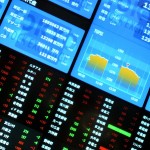Japanese economy shows signs of life
The economy of Japan grew at an annualized rate of 3.9 percent during the third quarter as the stimulus package of the government boosted private spending.
But analysts cautioned against feeling overly optimistic, since a possibility of a dip is likely if the yen gets stronger, exports weaken and subsidies given for the acquisition of fuel-efficient vehicles begin to dry up and impact manufacturers’ earnings.
Deflation or the reduction of prices has also hampered the Japanese economy trying to recover from the worst financial crisis it has faced since the end of World War II.
The latest data revealed that gross domestic product expanded to its fourth successive quarter, increasing by 0.9 percent in the quarter that ended in September compared to the previous quarter, which recorded a 0.4 percent increase. The third quarter growth rate beat the forecast of a 0.6 percent gain.
The annualized gain was calculated at 3.9 percent, more than the annualized growth of 2 percent of the U.S. economy during the same quarter. Japan’s economy is the third-largest in the world, trailing China and the United States.
Meanwhile, private consumption jumped 1.1 percent, spurred by incentives on fuel-efficient cars and energy-saving appliances which ended in September. Private consumption is responsible for nearly 60 percent of the Japanese economy. Exports were flat and barely contributed to the quarterly growth, signalling a weaker demand for Japanese products.
Weak capital spending and other economic figures suggest that Japan’s economy would experience a downturn. The yen reached its highest mark in 15 years in 2010 and the weakening of Japan’s biggest trade partner China would also negate any gains made by the Japanese economy.
